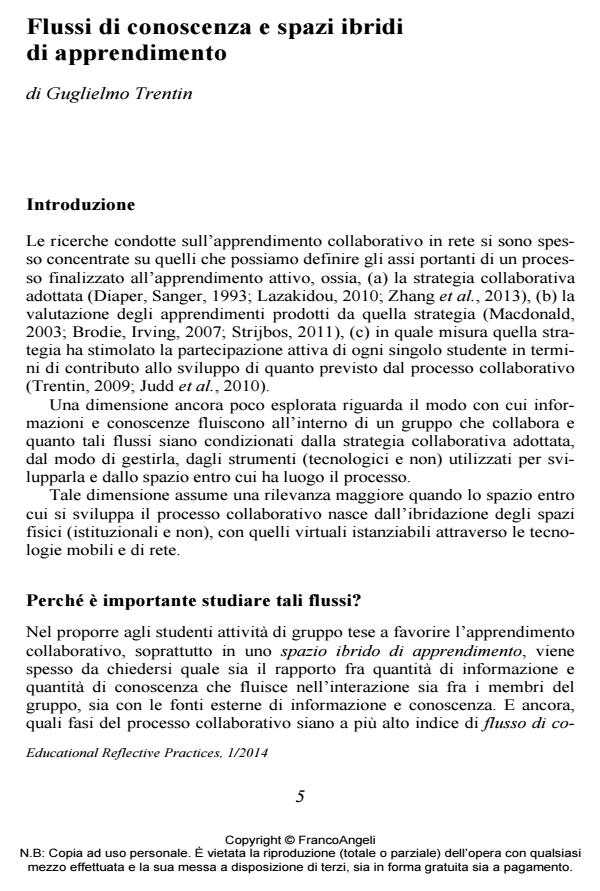Flussi di conoscenza e spazi ibridi di apprendimento
Journal title EDUCATIONAL REFLECTIVE PRACTICES
Author/s Guglielmo Trentin
Publishing Year 2015 Issue 2014/1
Language Italian Pages 25 P. 5-29 File size 270 KB
DOI 10.3280/ERP2014-001001
DOI is like a bar code for intellectual property: to have more infomation
click here
Below, you can see the article first page
If you want to buy this article in PDF format, you can do it, following the instructions to buy download credits

FrancoAngeli is member of Publishers International Linking Association, Inc (PILA), a not-for-profit association which run the CrossRef service enabling links to and from online scholarly content.
When proposing group activities to students with a view to fostering collaborative learning in a hybrid learning space, we often find ourselves speculating on the relative amounts of information and knowledge which flow in the interaction, both among the group members and with the external information and knowledge sources. And furthermore, what phases of the collaborative process are at a higher index of knowledge flow and which ones are at a higher index of information flow? The experiment described below has tried to answer these questions and it has involved 66 university students.
Guglielmo Trentin, Flussi di conoscenza e spazi ibridi di apprendimento in "EDUCATIONAL REFLECTIVE PRACTICES" 1/2014, pp 5-29, DOI: 10.3280/ERP2014-001001